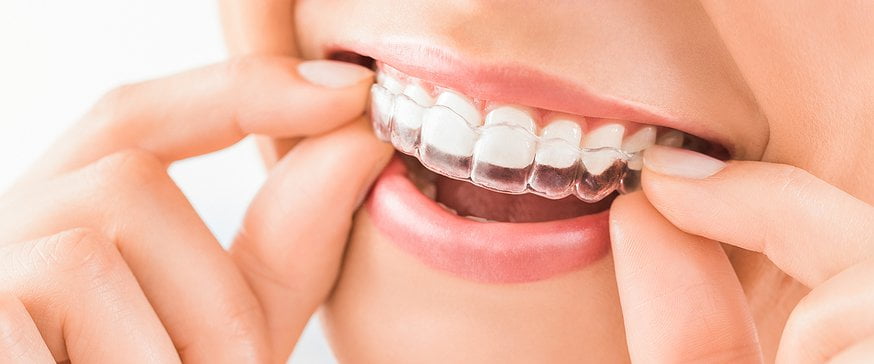Legacy Orthodontics Fundamentals Explained
Legacy Orthodontics Fundamentals Explained
Blog Article
Legacy Orthodontics Fundamentals Explained
Table of ContentsThe Ultimate Guide To Legacy OrthodonticsNot known Facts About Legacy OrthodonticsExcitement About Legacy OrthodonticsWhat Does Legacy Orthodontics Mean?Some Ideas on Legacy Orthodontics You Need To Know
In addition, we offer adjustable treatment schedules, adaptable payment options and a fun, delightful experience.An orthodontist is a dental expert trained to detect, stop, and treat teeth and jaw irregularities. Orthodontists work with individuals of all ages, from children to grownups.
Malocclusion, or misaligned teeth, can lead to oral issues, including dental cavity, gum tissue illness, and tough or uncomfortable eating. Not everybody is born with straight teeth. If you have a negative bite or big rooms between your teeth, you might wish to consult a dental practitioner focusing on orthodontic treatment.
Legacy Orthodontics Things To Know Before You Get This
( Picture Credit History: DigitalVision/Getty Images) Orthodontists make use of fixed and removable dental tools, like braces, retainers, and bands, to transform the placement of teeth in your mouth. Orthodontic treatment is for dental abnormalities, including: Uneven teethBite problems, like an overbite or an underbiteCrowded teeth or teeth that are too much apartJaw misalignmentThe objective of orthodontic treatment is to improve your bite.
While you could think of orthodontists as primarily for kids or teens that need braces, they can fix oral issues at any kind of age. Orthodontists go to university, dental institution, and orthodontic college.
, but not all dental experts are orthodontists. They focus on two locations: How to properly and securely move teeth How to properly assist development in the teeth, jaw, and faceOnce an orthodontist has actually completed training, they have the option to become board certified.
The Facts About Legacy Orthodontics Revealed
Misalignment, or malocclusion, is the most common reason people see an orthodontist. It is genetic and is the result of dimension differences in between the upper and lower jaw or in between the jaw and teeth. Malocclusion brings about tooth overcrowding, a twisted jaw, or uneven bite patterns. Malocclusion is typically treated with: Your orthodontist attaches steel, ceramic, or plastic square bonds to your teeth.
Some individuals need a headwear to assist move teeth right into line with pressure from outside the mouth. A retainer is a custom-made gadget that maintains your teeth in location.
They can produce extra area in the mouth without having to pull teeth. Orthodontists make use of cords, surgical screws, or plates to support your jaw bone.
You may need to see an orthodontist if you have: Crowding or not adequate space for all of your teethOverbite, when your upper teeth come your bottom teethUnderbite, when your base teeth are as well much forwardSpacing or problems with gapsCrossbite, which is when your upper teeth fit behind your base teeth when your mouth is closedOpen bite or an upright void in between your front base and top teethMisplaced midline, when the facility of your base and top teeth do not align Correcting a dental malocclusion can: Make biting, eating, and speaking easierImprove the balance of our face and your overall appearanceEase discomfort from temporomandibular joint disordersSeparate your teeth and make them easier to clean up, helping prevent tooth degeneration or dental caries It's typically a dental practitioner who first notifications misaligned their website teeth throughout a routine examination.
4 Simple Techniques For Legacy Orthodontics

During your initial orthodontic consultation, you'll likely have: A dental examPhotos taken of your face and smileDental X-raysPanoramic (360 degree) X-rays of your face and headImpressions to develop molds of your teethThese tests will certainly help your orthodontist know how to wage your therapy. leesburg orthodontics. An orthodontist is a dental practitioner that's had training to treat your teeth and jaw
Orthodontists may perform surgical procedure, exams,X-rays,and more to assist you obtain a much more comfy, healthier smile. An orthodontist is concentrated on your bite, so something like a cracked tooth would be dealt with by a dental expert. Orthodontists are dental practitioners yet not all dentists are orthodontists. Orthodontists are concentrated on your bite, or the method your teeth meshed, and the straightness of your teeth.
Ever before wondered how stars constantly seem to have flawlessly straightened teeth? Orthodontists are oral professionals that concentrate on fixing irregularities in the teeth and jaws.
Legacy Orthodontics Fundamentals Explained

While dental braces are one of the most typically acknowledged orthodontic treatment, orthodontists have a varied toolkit at their disposal. The details technique chosen depends on the seriousness of the instance, the client's age, and specific preferences. These reliable dental braces make use of a system of brackets bound to the teeth and attached by cords.
Clear aligners, like Invisalign, are a popular alternative for patients seeking a more very discreet treatment choice. These detachable trays are customized to progressively change the teeth's placement. Headgear might be made use of along with braces or aligners to apply additional targeted pressures, specifically for correcting jaw discrepancies. In instances of narrow jaws, palatal expanders can be made use of to create room for proper tooth positioning.
Report this page